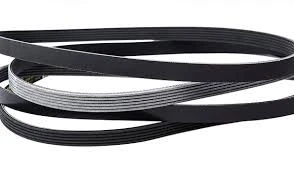- Arabic
- French
- Russian
- Spanish
- Portuguese
- Turkish
- Armenian
- English
- Albanian
- Amharic
- Azerbaijani
- Basque
- Belarusian
- Bengali
- Bosnian
- Bulgarian
- Catalan
- Cebuano
- Corsican
- Croatian
- Czech
- Danish
- Dutch
- Afrikaans
- Esperanto
- Estonian
- Finnish
- Frisian
- Galician
- Georgian
- German
- Greek
- Gujarati
- Haitian Creole
- hausa
- hawaiian
- Hebrew
- Hindi
- Miao
- Hungarian
- Icelandic
- igbo
- Indonesian
- irish
- Italian
- Japanese
- Javanese
- Kannada
- kazakh
- Khmer
- Rwandese
- Korean
- Kurdish
- Kyrgyz
- Lao
- Latin
- Latvian
- Lithuanian
- Luxembourgish
- Macedonian
- Malgashi
- Malay
- Malayalam
- Maltese
- Maori
- Marathi
- Mongolian
- Myanmar
- Nepali
- Norwegian
- Norwegian
- Occitan
- Pashto
- Persian
- Polish
- Punjabi
- Romanian
- Samoan
- Scottish Gaelic
- Serbian
- Sesotho
- Shona
- Sindhi
- Sinhala
- Slovak
- Slovenian
- Somali
- Sundanese
- Swahili
- Swedish
- Tagalog
- Tajik
- Tamil
- Tatar
- Telugu
- Thai
- Turkmen
- Ukrainian
- Urdu
- Uighur
- Uzbek
- Vietnamese
- Welsh
- Bantu
- Yiddish
- Yoruba
- Zulu
Déc . 04, 2024 19:43 Back to list
Honda Timing Belt Replacement Guide for Optimal Engine Performance and Longevity
Understanding the Importance of Timing Belt Maintenance in Honda Vehicles
When it comes to maintaining the performance and longevity of Honda vehicles, one of the most critical components that deserve attention is the timing belt. Often overlooked by many car owners, the timing belt plays a crucial role in the functioning of the engine. Understanding its significance, the implications of neglect, and the best practices for maintenance can save you time, money, and stress in the long run.
What is a Timing Belt?
The timing belt is a rubber component that connects the crankshaft and camshaft in an engine. Its primary purpose is to synchronize the rotation of these two critical engine parts, ensuring that the engine's valves open and close at the proper intervals during each cylinder's intake and exhaust strokes. In essence, the timing belt keeps the engine components in sync, which is vital for optimal engine performance.
Why Timing Belt Maintenance is Crucial
Honda, like many other manufacturers, recommends specific intervals for timing belt replacement. This is because, over time, the belt can wear down, crack, or snap. A broken timing belt can lead to catastrophic engine damage, potentially costing thousands of dollars in repairs. In some cases, it may even result in the complete loss of the engine. Therefore, adhering to maintenance schedules and being proactive about timing belt care is essential for all Honda owners.
Signs of Timing Belt Wear
It's important to be vigilant about the condition of your timing belt. Some signs of wear may include
1. Visual Damage Inspect the belt for cracks, fraying, or missing pieces. 2. Engine Noise Unusual noise from the engine, such as whining or grinding, may indicate a failing timing belt. 3. Check Engine Light If your check engine light comes on, it could be related to timing belt issues. 4. Engine Performance Issues If your Honda is experiencing rough idling, decreased power, or stalling, it may be time to check the timing belt.
for honda timing belt

If you notice any of these signs, it is crucial to consult a mechanic immediately to diagnose the problem
.Recommended Maintenance Practices
To ensure the longevity and efficiency of the timing belt, follow these recommended practices
1. Adhere to Service Intervals Honda typically recommends replacing the timing belt every 60,000 to 100,000 miles, depending on the model. Always consult your owner's manual for specific guidelines.
2. Check Other Components When replacing the timing belt, it’s wise to simultaneously inspect or replace other components, such as the water pump, tensioner, and pulleys, since they are often connected and subject to wear.
3. Regular Inspections Have your mechanic perform regular inspections of the timing belt as part of standard vehicle maintenance. Catching wear and tear early can prevent costly repairs later on.
4. Drive Sensibly Aggressive driving can exacerbate wear on the timing belt. Smooth driving habits can extend the life of the belt and improve overall vehicle performance.
Conclusion
In summary, the timing belt is a vital component of your Honda's engine that requires regular attention and maintenance. Ignoring its condition can lead to severe consequences, including costly repairs or even complete engine failure. By staying informed about the signs of wear, adhering to recommended replacement intervals, and practicing proactive vehicle maintenance, you can ensure your Honda continues to perform optimally for years to come. Remember, a little preventive care goes a long way in extending the life of your vehicle and ensuring a safe, smooth ride.
-
Korean Auto Parts Timing Belt 24312-37500 For Hyundai/Kia
NewsMar.07,2025
-
7PK2300 90916-T2024 RIBBED BELT POLY V BELT PK BELT
NewsMar.07,2025
-
Chinese Auto Belt Factory 310-2M-22 For BMW/Mercedes-Benz
NewsMar.07,2025
-
Chinese Auto Belt Factory 310-2M-22 For BMW/Mercedes-Benz
NewsMar.07,2025
-
90916-02660 PK Belt 6PK1680 For Toyota
NewsMar.07,2025
-
drive belt serpentine belt
NewsMar.07,2025

